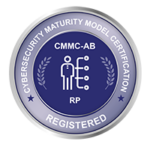In May 2017, President Trump issued an Executive Order on “Strengthening the Cybersecurity of Federal Networks and Critical Infrastructure” that was essentially a carbon copy of the Obama-era cyber-security policy. In a heated time of political divisiveness, it was a seemingly bipartisan move and went largely unnoticed due to a lack of significant changes. Later in the year, Trump issued a Presidential Proclamation declaring October 2017 to be “National Cybersecurity Awareness Month.” While many of those involved in this area may have seen this as empty talk at the time, at the end of October the Department of Homeland Security (DHS) put forward a mandate with a change to the Federal Information Security Management Act (FISMA)[1] reporting requirements. For the first time mobile devices were added to the list of operating systems that agencies must report on in terms of protection, detailing how they are limiting or containing the impact of potential cyber-security events.
Reporting on Mobile Devices, Assets, and Apps From 2018 On
From the 2018 Federal Fiscal Year on, agencies have been required to report on mobile endpoint security to be FISMA compliant. While having a system in place for mobile endpoint security has always been a best practice, the reality is many organizations don’t include this in their Security Information and Event Management (SIEM) systems leaving security in the proverbial hands of their EMM systems. Until now, many executives, constantly stretched for time across innumerable responsibilities, rarely considered it to be a high-priority area. DHS Cyber Security Division Program Manager Vincent Sritapan put it succinctly to an audience of federal IT specialists and software CxOs from the private sector when he said, “If you’ve never reported mobile assets, mobile devices and apps before, guess what? You’re going to be doing it this year coming up.”[2]
A year after the executive order and several months into the new FISMA compliance mandate, we are still seeing cyber hacks daily. Mobile devices are the most dangerous point of intrusion to an organization’s security network, but they continue to be a back-burner item to most. In large enterprises, mobile devices are looked at as toys with games on them, and protecting them comes last in line to application management, network security, mainframes and other larger IT concerns.
Compliance initiatives for data security alone aren’t enough to fully secure mobile devices, servers, desktops, and laptops. You must include all event logs from all IT assets, big and small into your SIEM systems then you must correlate events. Having event logs from endpoint devices alongside servers, desktops, and other IT assets in your SIEM provides evidence of security measures in place for all data as well as visibility across the entirety of the enterprise for anomalous user behavior indicative of cyber threat.
How to Further the New FISMA Compliance Mandate
Organizations can take steps now to protect the security on employee’s mobile devices. SyncDog’s Secure.Systems™ is a containerized BYOD security solution designed for employees who need an easy-to-install tool that keeps them productive with minimal risk. The National Institute of Standards and Technology (NIST), which mandates standards for government information technology and is currently tasked with mandating FISMA compliance in a measurable way, has certified Secure.Systems™ with a Federal Information Processing Standards (FIPS)-validated connector with AES 256-bit encryption. Secure.Systems™ allows you to switch between a personal and work profile, providing a secure isolated application platform for employees accessing enterprise mobile applications on BYOD or CYOD (Choose Your Own Device) devices. This containerized workspace delivers a highly functional and easy app experience for users, and protects client enterprise networks and data both on the device and in transit. SyncDog’s Secure.Systems™ is now available as a subscription service cloud download from Secure.Systems™ and Microsoft Azure.
FISMA compliance aside, it’s no secret many workers use their mobile devices (company-issued or not) for a mix of professional and personal purposes, which makes their devices about as secure as a house with a key under the doormat. Even seemingly innocuous apps, such as a calendar tool an employee adds to their device, can really be malware. The employee thinks it’s helping their productivity, but the device is not monitored by the SIEM system. Next, they have a security breach with the malware stealing data and IP from the device and maybe from your datacenter. Secure.Systems™ containerization isolates your corporate enterprise mobile productivity apps from other apps on mobile devices to prevent situations like this from occurring.
To learn more about what is necessary for your organization to tighten the gap on mobile endpoint security, download this whitepaper: “BYOD Will be One of Your Greatest Threat Vectors in the Next 12 Months: Here are Five Tips to Reduce BYOD Risk in Your Enterprise.”
[2] Cyberscoop, “What’s lurking in federal mobile tech? Apps, devices could hold nasty surprises.”
